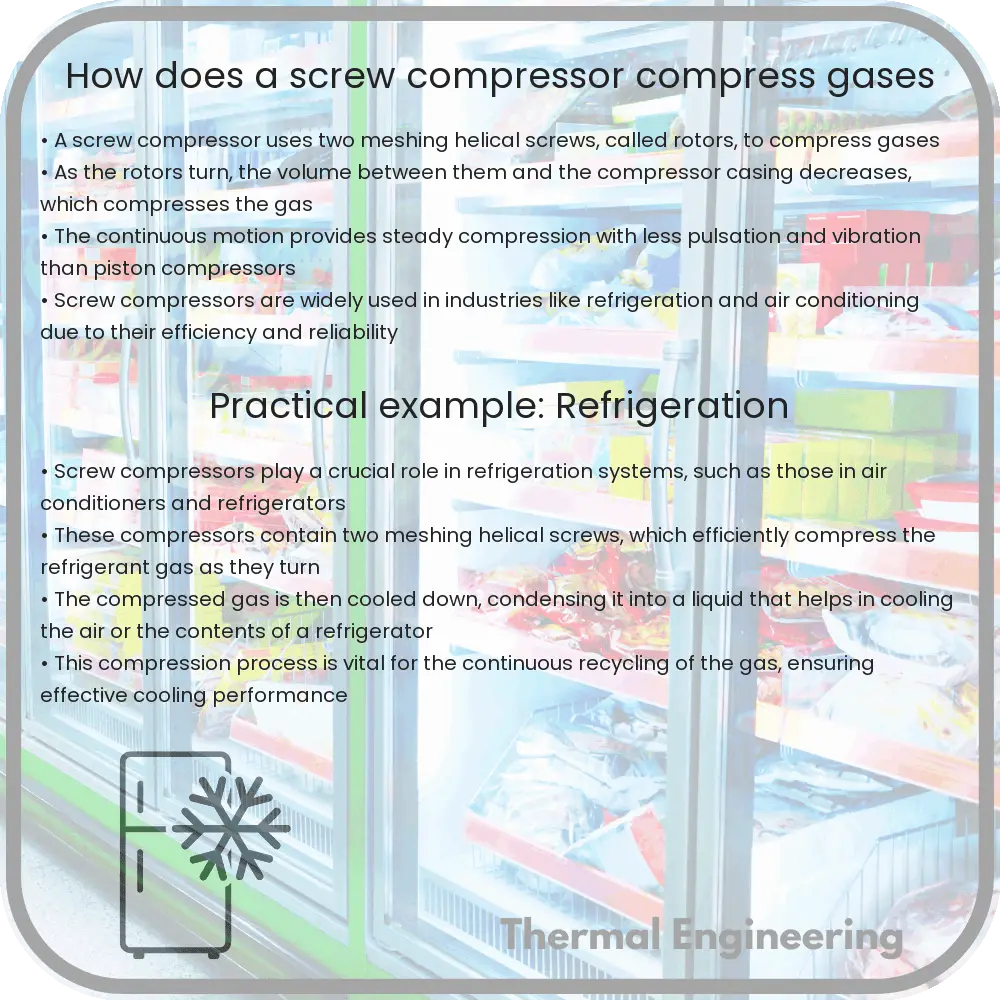Learn how a screw compressor functions, its components, and the advantages for industrial applications in refrigeration and air conditioning.

Understanding How a Screw Compressor Works
A screw compressor, commonly used in systems requiring high pressure and high volume, like air conditioning and refrigeration systems, employs a mechanism quite different from the typical piston compressors. This type of compressor uses two interlocking helical rotors to compress the gas. In this article, we will explore the basic principles behind the operation of a screw compressor and how it efficiently compresses gases.
The Basic Components
- Rotor: The main components are two helical screws, known as the male rotor and the female rotor. These are meshed together and rotate in opposite directions.
- Casing: The rotors are enclosed in a tight casing that is designed to contain the gas and form the compression chambers.
- Inlet and Discharge Ports: The compressor has an inlet for the gas to enter and a discharge port from where the compressed gas exits.
- Oil System: Most screw compressors are oil-flooded, meaning that oil is injected into the compressor to aid in sealing, lubrication, and cooling.
Compression Process
The process of compressing gas in a screw compressor follows several steps:
- Intake of Gas: As the rotors start to turn, gas enters the compressor through the inlet port and fills the cavities between the screws.
- Compression: As the screws interlock, the volume of these cavities decreases, compressing the gas trapped inside. This happens because the screws push the gas through the compressor from the intake side to the discharge side.
- Mixing with Oil: In oil-flooded compressors, oil is injected into the compression chamber to seal the gaps, absorb heat, and reduce the temperature of the compressed gas.
- Discharge: The compressed gas, now mixed with oil, moves towards the discharge port. Before exiting the compressor, it passes through a separator to remove the majority of the oil from the gas. The reclaimed oil is cooled, filtered, and reused.
- Exhaust: The compressed and cooled gas then exits the compressor through the discharge port, ready to be used in the application.
Advantages of Screw Compressors
Screw compressors are favored in industrial application due to several advantages:
- Efficiency: They provide continuous compression with minimal surging, which makes them efficient for both low and high capacity systems.
- Reliability: With fewer moving parts compared to piston compressors, screw compressors have a lower risk of mechanical failure.
- Lifespan: The design minimizes wear and tear, extending the life of the compressor significantly.
- Capacity Control: Many screw compressors offer flexible capacity control, which allows the system to adjust the compressor output as needed.
In conclusion, the screw compressor is a robust and efficient device for compressing gases, with applications ranging from HVAC systems to manufacturing processes. Understanding how they operate not only highlights the marvels of mechanical engineering but also helps in choosing the right type of compressor for specific industrial needs.